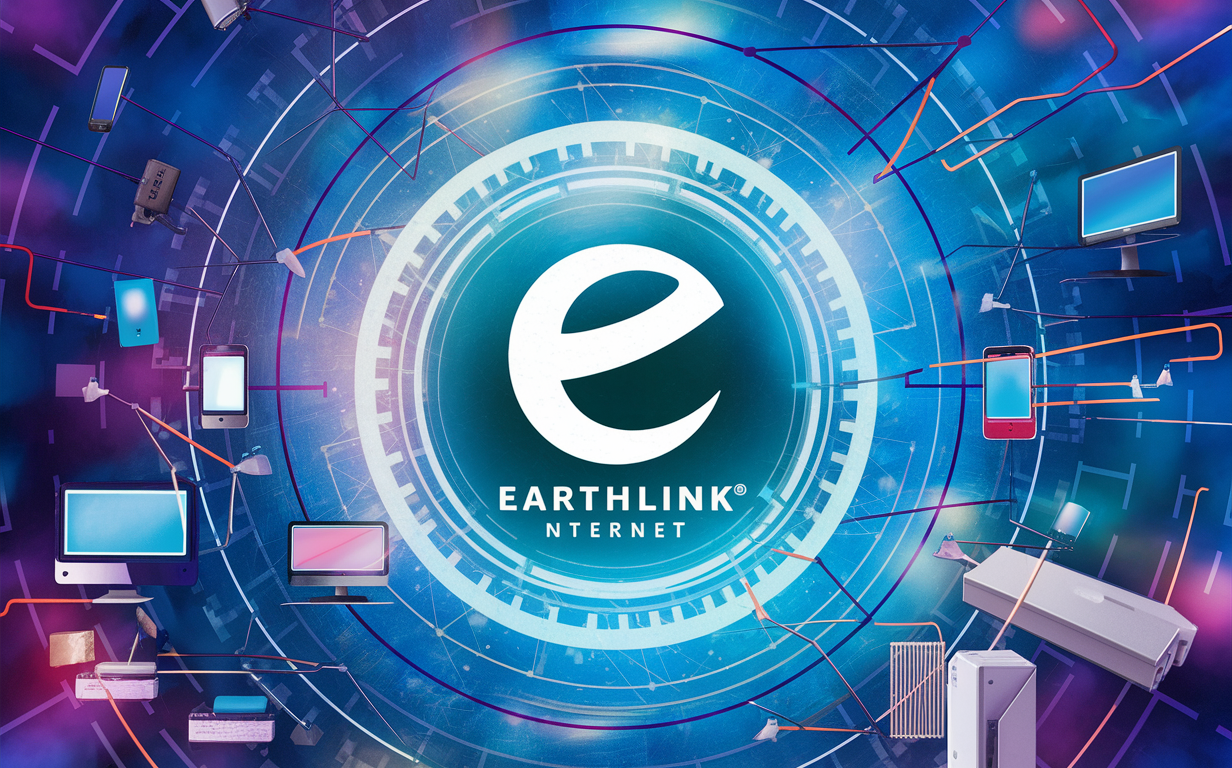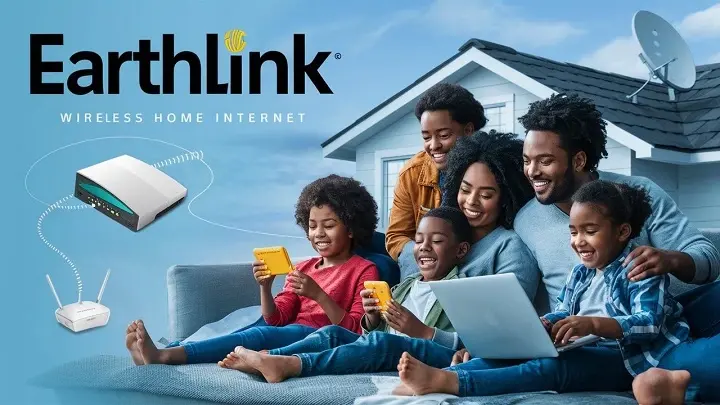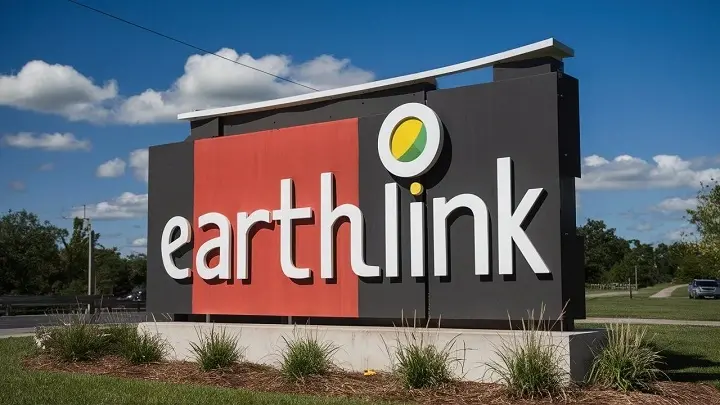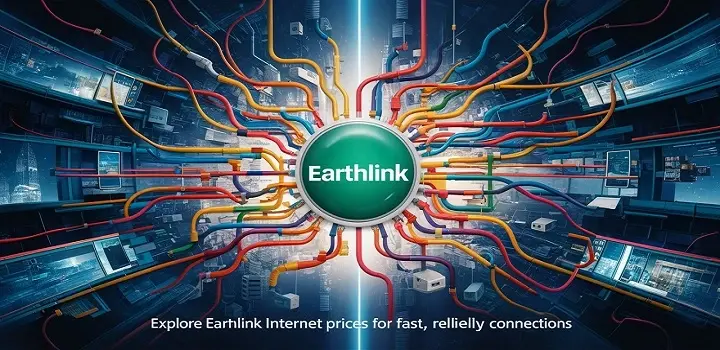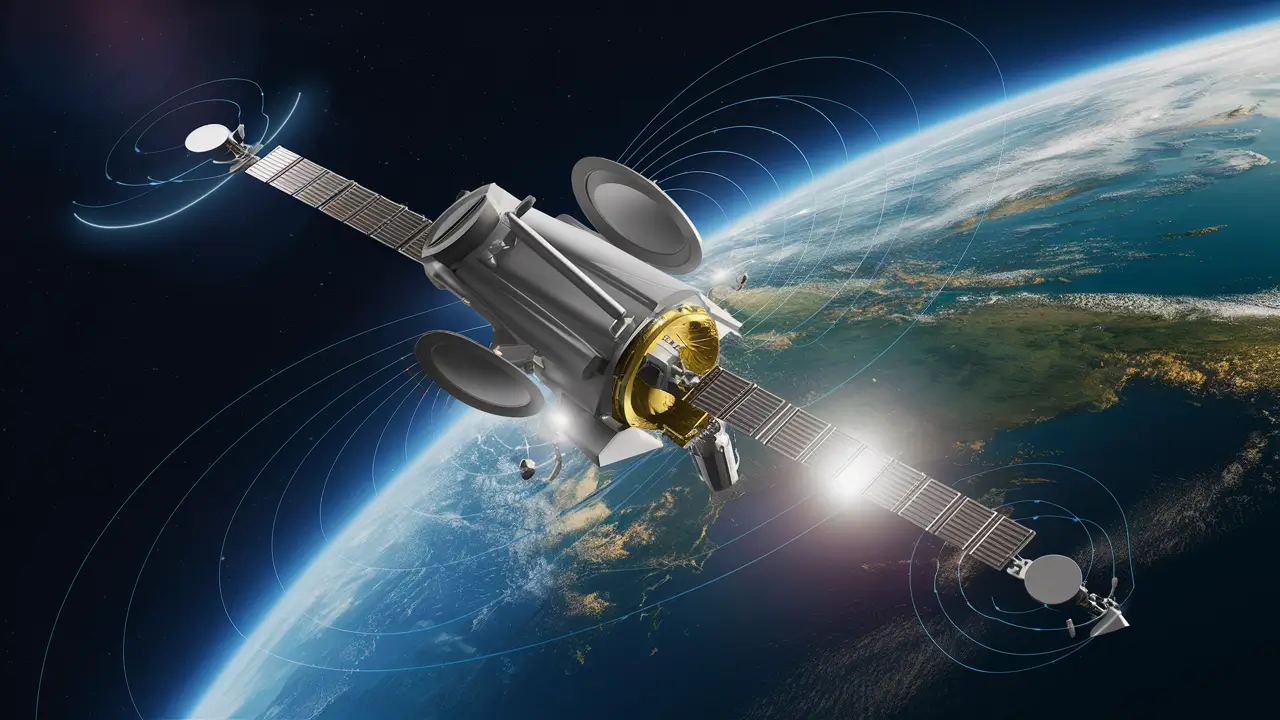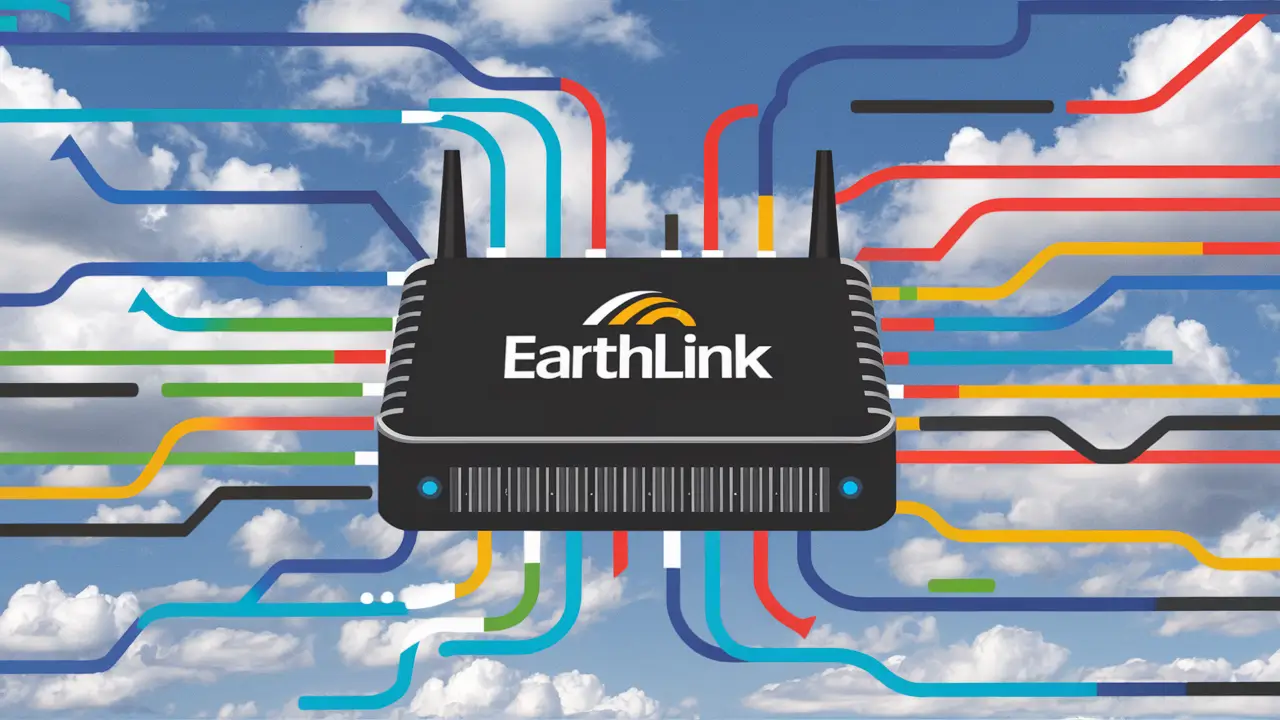How Much Is Earthlink Internet Service?

Navigating internet service providers can be complex, but understanding EarthLink's pricing is key to finding a plan that fits your budget and needs. This guide breaks down the cost of EarthLink internet service in 2025, detailing factors that influence pricing and how to get the best value.
Understanding EarthLink Internet Plans and Pricing
EarthLink, a long-standing player in the internet service provider (ISP) market, offers a range of plans designed to cater to diverse user needs and budgets. For many consumers in 2025, the primary question revolves around the direct cost: "How much is EarthLink internet service?" The answer, however, isn't a single, fixed number. EarthLink's pricing is dynamic, influenced by several factors including the type of internet technology available at your specific address, the speed tier you select, promotional offers, and any additional services you might bundle.
It's crucial to understand that EarthLink operates on a model where they often leverage existing infrastructure, including fiber optic networks where available, as well as DSL and fixed wireless technologies in areas where fiber isn't yet present. This multi-technology approach means pricing can vary significantly from one location to another. For instance, a high-speed fiber optic plan in a densely populated urban area might have a different price point than a fixed wireless plan in a rural setting, even if both are offered by EarthLink. This guide aims to demystify these costs, providing you with the insights needed to make an informed decision about EarthLink internet service in 2025.
Key Factors Influencing EarthLink Internet Costs
Before diving into specific plan costs, it's essential to grasp the elements that contribute to the final price tag of your EarthLink internet service. Understanding these factors will help you anticipate the actual monthly bill and identify potential areas where costs might fluctuate.
Internet Technology Type
The backbone of EarthLink's service delivery is its technology. The type of internet connection available at your home is a primary determinant of speed, reliability, and, consequently, cost.
- Fiber Optic: This is generally the fastest and most reliable technology. If EarthLink offers fiber to your home, expect higher potential speeds and, often, a slightly higher price point compared to other technologies. Fiber optic internet uses light pulses to transmit data, offering symmetrical upload and download speeds and minimal latency.
- DSL (Digital Subscriber Line): EarthLink utilizes existing telephone lines for its DSL service. DSL speeds are typically lower than fiber and can be affected by the distance from the local exchange. It's often a more budget-friendly option, especially in areas where fiber is not available.
- Fixed Wireless: This technology uses radio waves to transmit internet signals from a fixed point (like a tower) to a receiver at your home. It's a common solution for rural or underserved areas. Pricing for fixed wireless can vary, but it often falls between DSL and fiber in terms of cost and performance.
- Satellite: While less common for EarthLink's primary offerings, in very remote locations, satellite internet might be an option. This is typically the most expensive and slowest option, with higher latency due to the distance the signal travels.
Speed Tiers and Bandwidth
Internet speed is measured in megabits per second (Mbps). EarthLink offers various speed tiers, from basic plans suitable for light browsing to high-speed plans for streaming, gaming, and multiple users. Generally, the higher the advertised download and upload speeds, the more expensive the plan will be. For example, a 100 Mbps plan will cost more than a 25 Mbps plan.
In 2025, typical speed tiers might range from:
- Basic (25-50 Mbps): Suitable for 1-2 users, email, web browsing, and standard-definition streaming.
- Standard (100-300 Mbps): Good for small families, multiple devices, HD streaming, and light online gaming.
- Fast (500-1000 Mbps): Ideal for heavy streamers, gamers, large households, and demanding online activities.
- Gigabit (1 Gbps+): The highest tier, offering lightning-fast speeds for the most intensive users.
Promotional Offers and Contract Terms
ISPs like EarthLink frequently offer introductory pricing, discounts for new customers, or bundled packages to attract subscribers. These promotions can significantly reduce the initial cost for a set period (e.g., 12 or 24 months). It's crucial to understand the terms of these offers:
- Introductory Pricing: The advertised low price often applies only for a limited time. After the promotional period ends, the price will revert to the standard rate, which can be considerably higher.
- Contract Length: Some plans may require a 12-month or 24-month contract. While this can lock in a promotional rate, early termination fees can be substantial if you need to cancel before the contract ends. Month-to-month plans offer flexibility but may come at a higher regular price.
- Bundling: EarthLink may offer discounts if you bundle internet with other services, though this is less common than with traditional cable companies.
Equipment Rental Fees
You will likely need a modem and potentially a router to connect to EarthLink's network. EarthLink typically offers these for rent on a monthly basis. While you can often purchase your own compatible equipment to avoid these fees, renting provides convenience and technical support from EarthLink. These rental fees, while seemingly small, add up over time and contribute to the overall monthly cost.
Installation and Activation Fees
Most ISPs, including EarthLink, charge a one-time fee for professional installation or activation of the service. This fee covers the technician's visit and the setup of your connection. Sometimes, EarthLink may waive these fees as part of a promotional offer for new customers.
Location and Availability
As mentioned, the most significant factor influencing EarthLink's pricing is your geographic location. The availability of different technologies (fiber, DSL, fixed wireless) varies widely. Areas with more advanced infrastructure, like fiber optic networks, tend to have more plan options and potentially more competitive pricing due to infrastructure investment. Conversely, rural or remote areas might have fewer options and potentially higher costs for less advanced technologies.
EarthLink Internet Tiers and Their 2025 Pricing
In 2025, EarthLink's pricing structure aims to provide options for various user needs. While exact figures can fluctuate based on the factors mentioned above and specific regional promotions, we can outline typical pricing ranges for their common internet tiers. It's always recommended to visit the official EarthLink website or contact their sales department directly for the most accurate, location-specific pricing.
Fiber Optic Plans (Where Available)
EarthLink is actively expanding its fiber optic network, offering some of the fastest speeds available. These plans are generally the most premium in terms of price but offer unparalleled performance.
- EarthLink Fiber 300 Mbps: This plan is a strong contender for many households, offering a significant upgrade from DSL. It's ideal for streaming 4K content, online gaming, and supporting multiple connected devices simultaneously.
- Estimated Monthly Cost (2025): $70 - $90
- Key Features: Symmetrical upload/download speeds, low latency, suitable for 3-5 users.
- EarthLink Fiber 500 Mbps: For households with higher bandwidth demands, this tier provides ample speed for demanding applications.
- Estimated Monthly Cost (2025): $80 - $100
- Key Features: Excellent for heavy streaming, large file downloads/uploads, smart home integration.
- EarthLink Fiber 1 Gig (1000 Mbps): This is EarthLink's top-tier offering, delivering blazing-fast speeds for the most data-intensive users.
- Estimated Monthly Cost (2025): $90 - $120
- Key Features: Supports dozens of devices, ideal for professional remote work, intense gaming, and large media libraries.
Note: Fiber plans often come with unlimited data and may have slightly lower equipment rental fees or even include them in the promotional price for a limited time.
DSL Internet Plans
DSL remains a viable option for many, particularly in areas where fiber infrastructure is not yet established. EarthLink's DSL plans offer a more budget-friendly entry point into reliable internet access.
- EarthLink DSL 25 Mbps: A foundational plan for basic internet needs.
- Estimated Monthly Cost (2025): $40 - $60
- Key Features: Suitable for 1-2 users, email, web browsing, social media, and standard-definition video.
- EarthLink DSL 50 Mbps: A step up, offering improved performance for more simultaneous activities.
- Estimated Monthly Cost (2025): $50 - $70
- Key Features: Can handle multiple devices for light use, HD streaming on one device.
- EarthLink DSL 100 Mbps: The higher end of DSL offerings, providing a more robust experience.
- Estimated Monthly Cost (2025): $60 - $80
- Key Features: Better for families with moderate internet usage, multiple HD streams.
Note: DSL speeds can be affected by distance from the local exchange. Data caps may also apply to some DSL plans, though EarthLink is increasingly moving towards unlimited data for most services.
Fixed Wireless Internet Plans
Fixed wireless is designed to bridge the gap in areas lacking traditional wired broadband. Pricing can be competitive, but speeds and reliability can depend on line-of-sight to the tower and network congestion.
- EarthLink Fixed Wireless 50 Mbps: A common entry-level speed for fixed wireless.
- Estimated Monthly Cost (2025): $55 - $75
- Key Features: Good for basic internet tasks, streaming on a few devices.
- EarthLink Fixed Wireless 100 Mbps: Offers a more substantial experience for busy households.
- Estimated Monthly Cost (2025): $65 - $85
- Key Features: Improved performance for streaming, gaming, and multiple users.
- EarthLink Fixed Wireless 200 Mbps: A higher-tier fixed wireless option, providing faster speeds.
- Estimated Monthly Cost (2025): $75 - $95
- Key Features: Capable of handling more demanding tasks and a larger number of connected devices.
Note: Fixed wireless plans may have data caps, though EarthLink often offers generous allowances or unlimited options. Performance can be impacted by weather conditions and signal obstructions.
Comparison Table: EarthLink Internet Plan Estimates (2025)
| Plan Type | Estimated Speed (Download/Upload) | Estimated Monthly Cost (USD) | Best For |
|---|---|---|---|
| Fiber 300 Mbps | 300 Mbps / 300 Mbps | $70 - $90 | Moderate to heavy users, 4K streaming, gaming |
| Fiber 500 Mbps | 500 Mbps / 500 Mbps | $80 - $100 | Heavy users, multiple 4K streams, large file transfers |
| Fiber 1 Gig | 1000 Mbps / 1000 Mbps | $90 - $120 | Power users, large households, professional remote work |
| DSL 25 Mbps | Up to 25 Mbps / Up to 3 Mbps | $40 - $60 | Basic use, 1-2 users, email, web browsing |
| DSL 50 Mbps | Up to 50 Mbps / Up to 5 Mbps | $50 - $70 | Moderate use, multiple devices for light tasks |
| DSL 100 Mbps | Up to 100 Mbps / Up to 10 Mbps | $60 - $80 | Families, multiple HD streams, moderate gaming |
| Fixed Wireless 50 Mbps | Up to 50 Mbps / Up to 10 Mbps | $55 - $75 | Basic use, rural areas, light streaming |
| Fixed Wireless 100 Mbps | Up to 100 Mbps / Up to 20 Mbps | $65 - $85 | Moderate use, streaming, gaming in underserved areas |
| Fixed Wireless 200 Mbps | Up to 200 Mbps / Up to 30 Mbps | $75 - $95 | Heavier use, multiple devices, faster downloads |
*Prices are estimates and can vary significantly by location and available promotions. Always verify with EarthLink directly.
Comparing EarthLink's Value: A Look at Competitors
To truly understand "How much is EarthLink internet service?" in terms of value, it's essential to compare it against other major ISPs. In 2025, the competitive landscape for internet service is fierce, with providers like Xfinity (Comcast), Spectrum (Charter), AT&T, Verizon Fios, and T-Mobile Home Internet vying for customers. EarthLink often positions itself as a provider that can offer competitive pricing and good service, especially in areas where other major players might have limited options or less favorable terms.
EarthLink vs. Major Cable Providers (Xfinity, Spectrum)
Cable providers like Xfinity and Spectrum often offer high speeds, particularly in urban and suburban areas, leveraging their extensive cable networks. Their pricing can be very competitive, especially for introductory offers. However, cable internet can sometimes experience fluctuations in speed during peak usage hours due to shared bandwidth. EarthLink's fiber offerings, where available, often compete directly with the top-tier cable plans in terms of speed and reliability, sometimes at a comparable or slightly lower price point once promotional periods end. EarthLink's DSL and fixed wireless options are typically priced to compete with the lower and mid-tier cable plans, providing an alternative for customers who may not need the absolute highest speeds or who are in areas where cable is not available or is prohibitively expensive.
EarthLink vs. Major Fiber Providers (AT&T Fiber, Verizon Fios)
When EarthLink offers its own fiber optic service, it directly competes with providers like AT&T Fiber and Verizon Fios. These providers are known for their high-speed, symmetrical connections and reliability. Pricing among these fiber providers is often very close. The deciding factors for customers in 2025 might come down to:
- Availability: Which provider actually offers fiber to your specific address?
- Promotional Deals: Who has the best introductory offers?
- Contract Requirements: Are there any contracts, and what are the early termination fees?
- Bundling Options: Do any providers offer attractive bundles with TV or phone services?
EarthLink's strength here lies in its potential to offer competitive fiber pricing and potentially more flexible contract terms compared to some of the larger, more established fiber giants.
EarthLink vs. Fixed Wireless & 5G Home Internet (T-Mobile, Verizon)
The rise of 5G home internet from providers like T-Mobile and Verizon has introduced a new category of competition, particularly for customers in suburban and rural areas. These services leverage 5G cellular networks to provide home internet, often with unlimited data and no contracts, at a fixed monthly price. EarthLink's fixed wireless offerings are a direct competitor to these services. The performance of 5G home internet can vary based on cellular signal strength and network congestion, much like EarthLink's fixed wireless. EarthLink's advantage might be its longer history and established infrastructure in certain areas, potentially offering more consistent performance or better availability in some specific locations. Pricing is often comparable, making availability and perceived reliability key differentiators.
Key Comparison Points for 2025
When comparing EarthLink to competitors, consider these points:
- Speed vs. Price: Is EarthLink offering a better speed-to-price ratio for your needs?
- Data Caps: Does EarthLink offer unlimited data on plans where competitors impose caps?
- Contract Terms: Are you locked into a long contract, or does EarthLink offer more flexibility?
- Equipment Costs: How do EarthLink's modem/router rental fees compare?
- Installation Fees: Are there any waived installation fees with EarthLink?
- Customer Service Reputation: While difficult to quantify, customer reviews can offer insights.
For example, if EarthLink offers a 500 Mbps fiber plan for $85/month with no contract and unlimited data, while a competitor offers a similar speed plan for $90/month with a 12-month contract and a 1 TB data cap, EarthLink might represent better value for many users. Always perform a direct comparison for your specific address and needs.
Additional Fees and Important Considerations
Beyond the advertised monthly price for your chosen speed tier, there are several other costs and factors that can impact the total amount you pay for EarthLink internet service. Being aware of these will prevent unexpected charges and help you budget accurately.
Equipment Rental Fees
As mentioned, EarthLink typically charges a monthly fee for modem and router rentals. In 2025, these fees can range from $10 to $20 per month, depending on the equipment and the type of service. For example, a high-performance router needed for gigabit speeds might cost more to rent than a basic modem for DSL. Over a year, this can add $120 to $240 to your expenses. Consider purchasing your own compatible equipment if you plan to keep the service long-term, as the upfront cost of buying a modem/router can be recouped within 1-2 years of avoiding rental fees. Always check EarthLink's compatibility list before purchasing your own equipment.
Installation and Activation Fees
A one-time fee for setting up your service is standard. EarthLink's installation fees can range from $50 to $150. This fee covers the technician's visit to ensure the line is active and your equipment is properly configured. Sometimes, EarthLink offers promotions that waive these fees entirely for new customers, especially if you sign up for a longer-term plan or a higher speed tier. It's worth asking about any current installation fee waivers when you sign up.
Data Caps and Overage Charges
While many EarthLink plans, particularly fiber and higher-tier fixed wireless, come with unlimited data, some of their lower-tier DSL or older fixed wireless plans might still have data caps. If a data cap is in place, exceeding it can result in significant overage charges. For example, a plan with a 1 TB (terabyte) data cap might charge $10 for every additional 50 GB used. For heavy users who stream a lot of 4K video, download large files, or have multiple users in the household, exceeding these caps is a real possibility. Always clarify the data policy for the specific plan you are considering. In 2025, the trend is towards unlimited data, but it's not universal across all plans and technologies.
Early Termination Fees (ETFs)
If your EarthLink plan requires a contract (e.g., 12 or 24 months), you will likely be subject to an Early Termination Fee if you cancel service before the contract term is up. These fees can range from $100 to $300 or more, often calculated on a pro-rata basis (e.g., $10-$20 for each month remaining on the contract). This is a significant cost to consider if you anticipate moving or might switch providers. Month-to-month plans typically do not have ETFs but may have a higher standard monthly rate.
Service Upgrades and Downgrades
Changing your speed tier can sometimes incur a fee, although this is less common than other charges. If you upgrade your service, the new monthly rate will apply. If you downgrade, there might be a small administrative fee, or the new rate will simply take effect. It's also important to note that if you move, you'll need to check service availability at your new address. If EarthLink offers service there, you may need to pay a new installation fee.
Bundling Discounts (Limited)
While EarthLink is not primarily a bundle provider like traditional cable companies, they might occasionally offer discounts for bundling internet with specific partner services or if they offer a full suite of communications solutions in your area. However, it's less common for EarthLink to have extensive bundling options compared to providers like Xfinity or Spectrum.
Taxes and Surcharges
Like all utility services, your EarthLink bill will include federal, state, and local taxes, as well as various regulatory fees and surcharges. These can add an additional 10-20% to your base monthly rate. These are standard and unavoidable for most internet services.
How to Get the Best Deal on EarthLink Internet
Securing the most affordable and value-packed EarthLink internet service requires a strategic approach. By following these steps, you can maximize your savings and ensure you're getting the best possible plan for your needs in 2025.
1. Verify Availability and Specific Offers for Your Address
This is the absolute first step. EarthLink's pricing and available plans are highly dependent on your exact location. Visit the official EarthLink website and enter your address. This will show you which technologies (fiber, DSL, fixed wireless) are available and what specific plans and pricing are offered in your area. Don't rely on general pricing charts alone; your address is key.
2. Understand Your Actual Internet Needs
Before looking at speeds, assess how you use the internet:
- Number of Users: How many people will be using the internet simultaneously?
- Activities: Do you primarily browse the web and check email, or do you stream 4K video, play online games, or work from home with large file transfers?
- Number of Devices: How many smart devices (phones, tablets, smart TVs, gaming consoles, IoT devices) are connected?
For a single person or a couple with basic needs, 50-100 Mbps might suffice. A family of four with multiple streamers and gamers will likely need 300 Mbps or higher, especially if fiber is available. Overpaying for speed you don't need is a common mistake.
3. Look for Promotional Pricing and New Customer Deals
EarthLink, like most ISPs, heavily relies on promotional offers to attract new customers. These can include:
- Discounted Introductory Rates: Lower prices for the first 12 or 24 months.
- Waived Fees: Free installation, activation, or equipment rental for a period.
- Gift Cards or Rebates: Additional incentives for signing up.
Be sure to understand the duration of these promotions and the standard price that will apply afterward. If the standard price is too high, you might need to consider switching providers after the promotional period ends (though this can be a hassle).
4. Consider Contract Length vs. Flexibility
Promotional pricing is often tied to a contract (e.g., 12 or 24 months). If you value flexibility and might move or want to switch providers easily, opt for a month-to-month plan, even if the standard rate is slightly higher. If you are committed to staying with EarthLink for the contract term and your financial situation is stable, a contract can lock in a lower rate.
5. Evaluate Equipment Rental Fees
As discussed, equipment rental can add $10-$20+ per month. If you plan to stay with EarthLink for more than a year or two, purchasing your own compatible modem and router can save you money in the long run. Always check EarthLink's approved equipment list and ensure the devices you buy are compatible and meet the requirements for your chosen speed tier.
6. Ask About Bundling (If Applicable)
While not EarthLink's primary focus, inquire if there are any available bundles or discounts for combining services if you are interested in more than just internet. This is less likely with EarthLink compared to traditional cable companies, but it's always worth asking.
7. Negotiate (Politely)
While not always successful, especially with automated online systems, contacting EarthLink's sales department directly can sometimes yield better results than signing up online. You can mention competitor pricing or ask if there are any unadvertised deals available. Be polite and firm about your budget and needs.
8. Read the Fine Print
Before signing any agreement, carefully read all terms and conditions. Pay close attention to:
- The exact speed you are getting (advertised vs. actual).
- The duration of promotional pricing and the standard rate afterward.
- Data caps and overage charges.
- Early termination fees.
- All applicable taxes and fees.
9. Compare with Competitors
Use the information gathered about EarthLink's offers and compare it directly with what other providers (Xfinity, Spectrum, AT&T, Verizon, T-Mobile Home Internet, etc.) are offering at your address. Use online comparison tools or visit each provider's website. Sometimes, a competitor might offer a better overall value, even if EarthLink has a decent offer.
10. Look for Mail-in Rebates or Special Sign-up Bonuses
Occasionally, third-party websites or specific promotions might offer additional mail-in rebates or gift cards for signing up for EarthLink service through them. Factor these into your overall cost calculation.
By diligently following these steps, you can navigate the complexities of EarthLink's pricing and secure the best possible internet service deal for your household in 2025.
EarthLink Customer Support and Reliability
Beyond the monthly cost, two critical factors that influence the overall value of an internet service are its reliability and the quality of customer support. While EarthLink's pricing is a significant consideration, understanding these aspects is crucial for a satisfactory long-term experience. In 2025, consumer expectations for both are high, and EarthLink strives to meet these demands across its various service technologies.
Reliability of EarthLink Services
The reliability of EarthLink internet service is largely dictated by the underlying technology deployed in your area:
- Fiber Optic: EarthLink's fiber optic connections are generally considered the most reliable. Fiber is less susceptible to interference and degradation compared to other technologies. This means consistent speeds, low latency, and minimal downtime, making it ideal for critical applications like remote work, online education, and real-time gaming.
- DSL: DSL reliability can vary. While it uses established telephone lines, the quality of these lines and the distance from the local exchange can impact performance. Older or poorly maintained phone lines can lead to intermittent connectivity issues or slower-than-advertised speeds, especially during peak hours. However, for basic internet usage, DSL is often reliable enough.
- Fixed Wireless: The reliability of fixed wireless can be influenced by several factors, including the strength and clarity of the signal to the receiver at your home, obstructions (trees, buildings), and weather conditions. Heavy rain or snow can sometimes temporarily degrade the signal. However, modern fixed wireless technology has improved significantly, and for many users in areas without other options, it provides a stable and dependable connection. EarthLink typically works to ensure strong signal paths for its fixed wireless customers.
EarthLink invests in maintaining its network infrastructure to ensure consistent service delivery. However, like all ISPs, occasional outages can occur due to equipment failures, maintenance, or external factors like severe weather or power grid issues. Their network monitoring and maintenance efforts in 2025 aim to minimize these disruptions.
EarthLink Customer Support Channels and Quality
When issues arise, accessible and effective customer support is paramount. EarthLink offers several avenues for customers to seek assistance:
- Phone Support: EarthLink provides customer service via phone, typically offering support for billing inquiries, technical troubleshooting, and service setup. The availability of phone support can vary by region and time of day.
- Online Support and FAQs: Their website features a comprehensive knowledge base, FAQs, and troubleshooting guides that can help users resolve common issues independently. This is often the quickest way to find answers to standard questions.
- Email/Chat Support: Some customers may find email or live chat options available for less urgent inquiries or for those who prefer written communication.
- Technician Visits: For issues that cannot be resolved remotely, EarthLink can schedule a technician visit to your home to diagnose and fix problems with the line or equipment.
Customer reviews regarding EarthLink's support are mixed, as is common with many large ISPs. Some customers report positive experiences with helpful and efficient support staff, while others have encountered longer wait times or found it challenging to resolve complex technical issues. The quality of support can sometimes depend on the specific department you interact with (e.g., sales vs. technical support) and the nature of your problem. EarthLink's ongoing efforts in 2025 focus on improving customer satisfaction through training and streamlined support processes.
Comparing Support and Reliability
When evaluating EarthLink's support and reliability against competitors:
- Fiber: EarthLink's fiber reliability is generally on par with other major fiber providers like AT&T Fiber and Verizon Fios.
- DSL: Reliability is comparable to other ISPs offering DSL, with performance varying based on local infrastructure.
- Fixed Wireless: Reliability is similar to other fixed wireless and 5G home internet providers, with performance dependent on signal strength and environmental factors.
EarthLink's commitment to customer service aims to provide a consistent experience across all its offerings. If reliability is your absolute top priority and fiber is available, EarthLink is a strong contender. If you encounter issues, utilizing their online resources first can often lead to a quicker resolution, but phone support is available for more complex problems.
Making the Final Decision on Your EarthLink Service
Deciding on the right internet service provider involves weighing cost, speed, reliability, and customer support. For EarthLink internet service in 2025, the question "How much is it?" is best answered by understanding the multifaceted nature of their pricing and the value they offer across different technologies.
EarthLink provides a spectrum of options, from high-speed fiber optic connections in select areas to more widely available DSL and fixed wireless solutions. The estimated monthly costs for these plans typically range from around $40 for basic DSL up to $120 or more for gigabit fiber. However, these figures are averages. The most accurate pricing will always be determined by your specific address, the available technology, and current promotional offers. Remember to factor in potential additional costs such as equipment rental fees (which can be avoided by purchasing your own compatible equipment), installation charges (often waived for new customers), and any applicable taxes and surcharges.
When comparing EarthLink to competitors like Xfinity, Spectrum, AT&T, or T-Mobile Home Internet, consider not just the advertised monthly price but also the contract terms, data caps, and the actual speeds you will receive. EarthLink often appeals to customers seeking flexible month-to-month plans or those in areas where their specific technology offerings provide a superior solution compared to other providers. Their commitment to improving network reliability and customer support aims to deliver a consistent and satisfactory experience.
Ultimately, the best way to determine if EarthLink is the right choice for you is to visit their website, input your address to see precise available plans and pricing, and carefully assess your household's internet usage needs. By understanding all the components of the cost and comparing them against your requirements and competitor offerings, you can make an informed decision that provides the best value and performance for your home.
Disclaimer: All pricing and plan details mentioned in this article are estimates based on information available for 2025 and are subject to change. Availability varies by location. Always verify current offers and terms directly with EarthLink before signing up.
